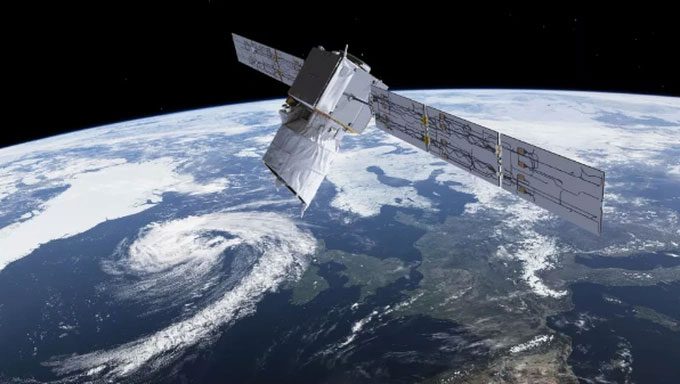An old, non-functional satellite is expected to fall to Earth on July 28.
According to information from the European Space Agency (ESA), the Aeolus satellite is anticipated to return to our planet after 5 years of operation in orbit.

Illustration showing the Aeolus satellite operating in low orbit. The satellite will re-enter Earth’s atmosphere this week (Photo: ESA).
The satellite measures 1.9 meters in length, 1.74 meters in width, and 2 meters in height, weighing approximately 1.3 tons. It has been operational since 2018, serving as the first satellite capable of measuring wind on our planet from space.
The mission of Aeolus has lasted much longer than the original one-year plan. As a result, the satellite has nearly exhausted its fuel and is falling to Earth at an increasing speed.
Currently, ESA is attempting to navigate Aeolus back safely by using some of the remaining fuel on board. This process began with remote operations that lowered the altitude from 280 km to 250 km, placing it in an elliptical orbit.
If everything goes according to plan, on July 26, ESA will further reduce the satellite’s altitude to 150 km. All these preparations are aimed at the final maneuver, scheduled for July 28, when ESA scientists will give the final command for Aeolus to land in the Atlantic Ocean.
According to ESA, the risk of Aeolus colliding with other spacecraft during navigation is very low. Even in the event of an incident, it is unlikely to pose a threat, as the landing area is sparsely populated.
“Before carrying out any maneuvers, we considered various scenarios and risks along with assessments at the time,” said Isabel Rojo Escude-Cofiner, the program director for spacecraft launches at ESA.
Of course, a safe landing does not mean that the satellite will remain intact. ESA scientists predict that about 80% of Aeolus’s mass will burn up upon reentry into Earth’s atmosphere. The remaining 20% will fall into the Atlantic Ocean and quickly sink to the seabed.


















































